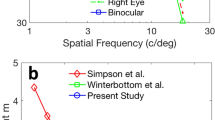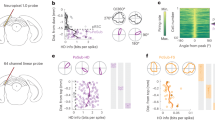Abstract
The robust behavior, the degree of response linearity, and the aspect of contrast gain control in visual cortical simple cells are (amongst others) the result of the interplay between excitatory and inhibitory afferent and intracortical connections. The goal of this study was to suggest a simple intracortical connection pattern, which could also play a role in other cortical substructures, in order to generically obtain these desired effects within large physiological parameter ranges. To this end we explored the degree of linearity of spatial summation in visual simple cells experimentally and in different models based on half-wave rectifying cells (’’push-pull models’’). Visual cortical push-pull connection schemes originated from antagonistic motor-control models. Thus, this model class is widely applicable but normally requires a rather specific design. On the other hand we showed that a more generic version of a push-pull model, the so-called cascaded inhibitory intracortical connection scheme, which we implemented in a biologically realistic simulation, naturally explains much of the experimental data. We investigated the influence of the afferent and intracortical connection structure on the measured linearity of spatial summation in simple cells. The analysis made use of the relative modulation measure, which is easy to apply but is limited to moving sinusoidal grating stimuli. We introduced two basic push-pull models, where the order of threshold nonlinearity and linear summation is reversed. Very little difference is observed with the relative modulation measure for these models. Alterative models, like half-wave squaring models, were also briefly discussed. Of all model parameters, the ratio of excitation to inhibition in the simple cell exerts the most crucial influence on the relative modulation. Linearity deteriorates as soon as excitatory and inhibitory inputs are imbalanced and the relative modulation drops. This prediction was tested experimentally by extracellular recordings from cat area 17 simple cells and we found that about 62% showed a significant deviation from linear behavior. The problem that individual basic push-pull models are hard to distinguish experimentally led us to suggest a different solution. In order to generically account for the observed behavior (e.g., imbalance of excitation versus inhibition), we suggested a rather generic version of a push-pull model where it no longer mattered about (the hard-to-distinguish) fine differences in connectivity. Thus, we introduced a new class of biophysically realistic models (’’cascaded inhibition’’). This model class requires very little connection specificity and is therefore highly robust against parameter variations. Up to 25 cells are connected to each target cell. Thereby a highly interconnected network is generated, which also leads to disinhibition at some parts of an individual receptive field. We showed that the performance of these models simulates the degree of linearity and its variability in recal simple cells with comparatively high accuracy. This behavior can be explained by the self-regulating properties of a cascaded inhibitory connection scheme by which the balance between excitation and inhibition at a given cell is improved by the joint network effects. The virtues and the generic design of this connection pattern, therefore, allow to speculate that it is used also in other parts of the cortex.
Similar content being viewed by others
Author information
Authors and Affiliations
Additional information
Received: 21 April 1997 / Accepted: 28 April 1998
Rights and permissions
About this article
Cite this article
Wörgötter, F., Nelle, E., Li, B. et al. A possible basic cortical microcircuit called ’’cascaded inhibition’’Results from cortical network models and recording experiments from striate simple cells. Exp Brain Res 122, 318–332 (1998). https://doi.org/10.1007/s002210050520
Issue Date:
DOI: https://doi.org/10.1007/s002210050520




